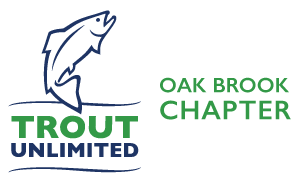2018 Conservation Fundraising Program Needs Your Support
The mission of your Oak Brook Trout Unlimited Chapter is to conserve, protect and restore coldwater fisheries and their watersheds in the Midwest. OBTU fulfills our mission through 1) advocacy, 2) K6–12 education programming, and 3) by providing funding and volunteers for hands-on projects to improve and rehabilitate coldwater river systems. There are no other outside sources of funding for our chapter. National Trout Unlimited membership annual dues are not shared with our Chapter.
“To fund these ongoing and new conservation and youth education programs, our board has identified a fund-raising target of $8,000 for these initiatives and would like your support in reaching this goal by June 30, 2018,” said John Snyder, Financial Development Committee Chair. “Each Board member has committed to a personal donation of at least $100.00 to kick off this fund-raising effort and we would like our members’ support at this same level—if possible. In fact, including a “Friends and Family” focus, your Board members are personally committed to a total of $3,000 in donations.
Mission success requires that we provide cash funding to cover out-of-pocket expenses including contracting for streamside excavation, replanting, baseline studies and K6-12 classroom fish tanks. Last year’s membership solicitation raised over $6,500 for our 2017 conservation and youth education programs:
Last year’s membership solicitation raised over $6,500 to cover out-of-pocket expenses including contracting for Wisconsin Driftless Area streamside excavation work, replanting, Michigan Coldwater River and Dowagiac River watershed baseline studies and K6-12 classroom fish tanks for our youth education programs.
Thank you very much for your 2017 volunteer and financial support of these past activities!
Consistent with our 2017-2020 Strategic Plan, the Chapter continues to focus on an aggressive conservation agenda which builds on our past Wisconsin Driftless Area and other Midwest stream restoration projects, adds an important new focus on the Dowagiac River watershed in Southwest Michigan and continues our commitment to youth education.
Specific 2018-2019 proposed conservation projects requiring cash funding include:
- Weister Creek stream restoration Phase 5 in Vernon County, Wisconsin.
- Sparta, Wisconsin stream restoration project.
- Spring and Fall Coldwater River Watershed (Alto, Michigan) macroinvertebrate studies.
- NEW!!! Dowagiac River stream restoration following the planned 2018 removal of the Pucker Street Dam in Niles, Michigan.
- TU Driftless Area Restoration (TUDARE) projects.
Please review the “ 2018-2019 Conservation Project Flyer” and “ Duke Welter TUDARE Interview” information for more details on these important efforts.
OBTU Donations Are Tax-deductible and May be Matched by Employers
OBTU is a 501(c)(3) non-profit and your donation is tax deductible and may also be matched by your employer. Our Employer Identification Number (EIN) is 38-1612715 and a download PDF of the IRS 501(c)(3) Determination Letter for 501(c)(3) non-profit documentation is available on our website’s “Donate” page.
You can mail a check made payable to “Oak Brook Trout Unlimited” to:
Oak Brook Chapter Trout Unlimited
P.O. Box 5046
Oak Brook, IL 60522-5046
Many thanks for your financial and volunteer support in 2017 and this year!
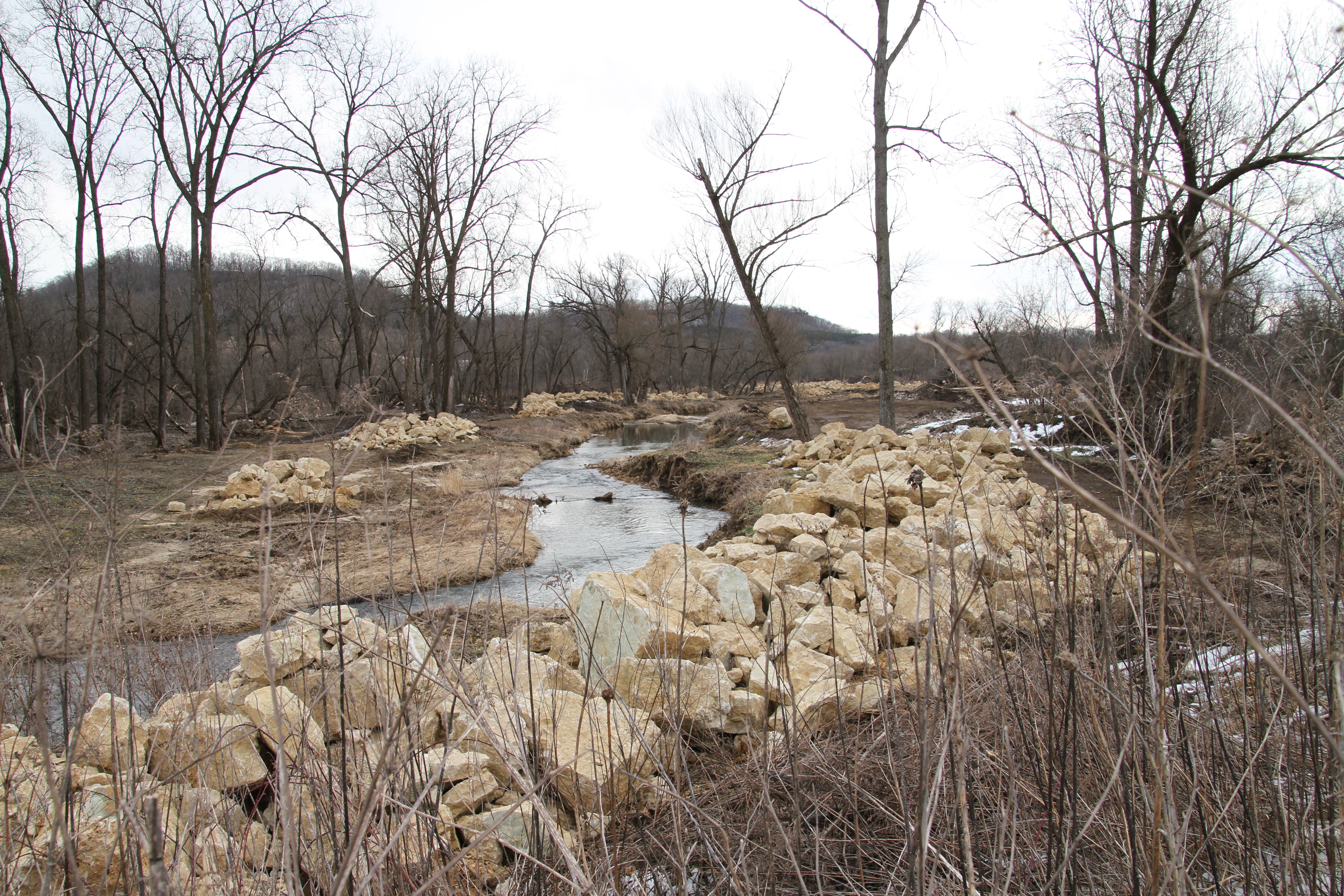
Dean Hansen—OBTU’s “Bug Keeper”—Helps Chapter Complete 10th Year of “Trout in the Classroom”
By Jim Schmiedeskamp
Oak Brook Chapter TU has successfully completed its 10th year of supporting “Trout in the Classroom” (TIC). TIC is a program that allows participating schools to raise trout from eggs to juvenile trout in a class from aquarium tank and release them in a northern Illinois trout stream or Lake Michigan. This year OBTU supported 11 school programs. Students from these schools released their trout during the week of April 30.
These release field trips are the culmination of a year’s activity for these students, as they visit the trout stream, test the water quality for comparison to their school tank, and seine and survey for aquatic nymphs and organisms that are part of the trout’s ecosystem. And of course, they release their trout fingerlings.
This program could not have been successfully completed without the support of OBTU volunteers. In fact, this year between the April entomology presentations at TIC schools and the release week, 28 OBTU volunteers worked a total of 73 volunteer days.
Dean Hansen is Oak Brook TU’s “bug keeper” providing an array of live aquatic insect specimens for a week’s worth of classes supporting the chapter’s “Trout in the Classroom” program. The Oak Brook TU program looks forward to Dean’s annual migration from his home in Minneapolis to Chicago every spring for his interactive entomology presentations featuring mayflies, caddisflies, damsel flies and hellgrammites. Now 75 and a retired commercial bee keeper, Dean continues to pursue his life’s passion studying insects now with the underwater variety as a volunteer educator. Here’s a recent interview with Dean as he marks his eighth year as the chapter’s featured entomology classroom expert and presenter.
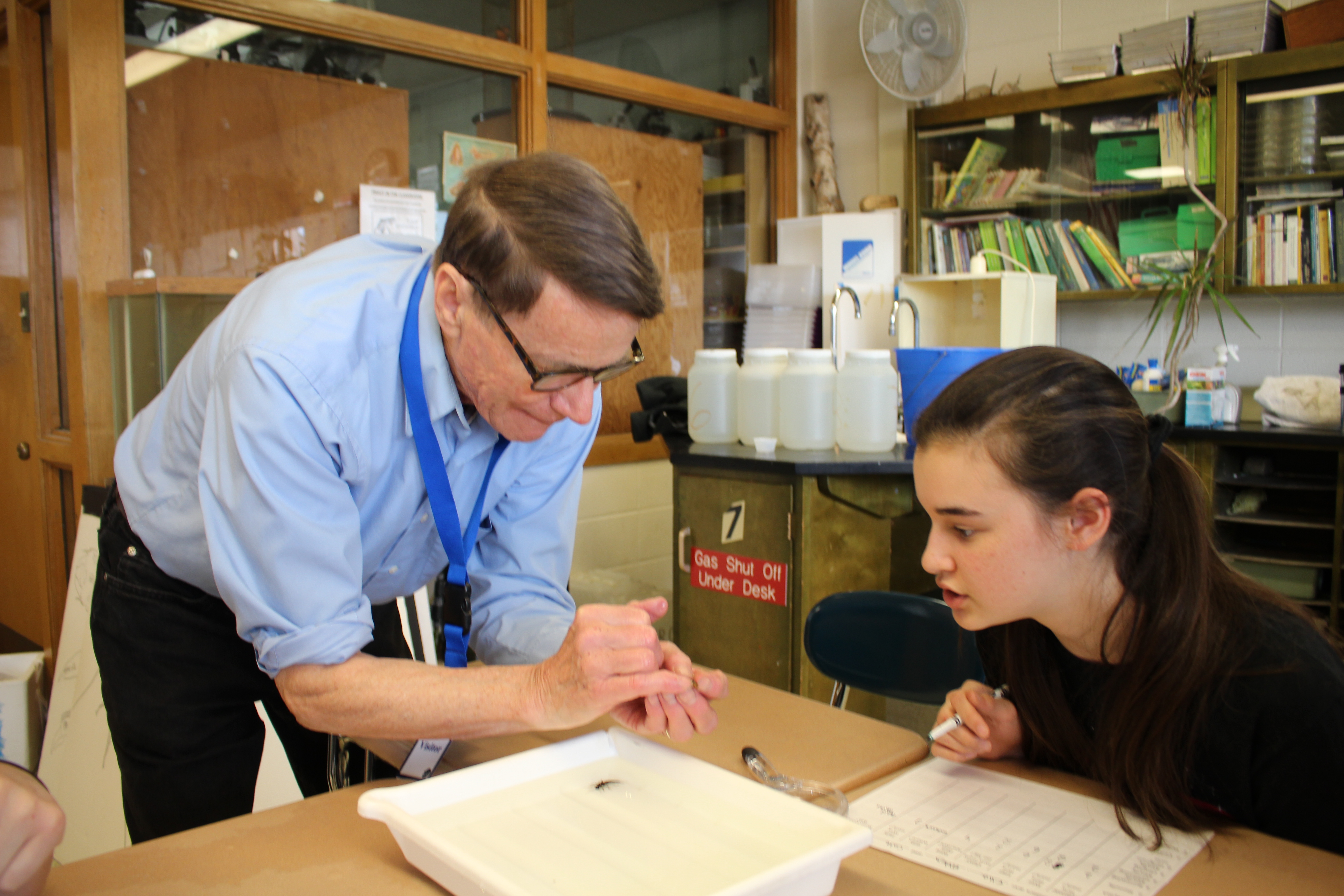
What do you call your home town?
I grew up in south Minneapolis, just a couple houses from Minnehaha Park, with lots of trees and grasses, and, of course, Minnehaha Creek. OK, not a Class I trout stream, but, still, moving water.
Did you fish as a kid? If yes, for what and with what kind of tackle?
Our parents took a family vacation every summer, usually to a resort on a lake in northern Minnesota. Fishing started at age five or so, with a casting rod and a worm on a hook. The neighborhood kids also did some worm fishing from the shore of nearby Lake Nokomis.
What was your major at the University of Minnesota (UMN)? I know your graduate work was in entomology. What was your PhD focused on?
I started in the Institute of Technology, first year as an aeronautical engineer, second year as a physics major, but then I did a major switch and became a zoology major for my junior and senior years at UMN.
Funny how life can hinge on such minor points: Near the end of my junior year, I was walking down the stairway in the Zoology Building and saw a notice about field classes at the UMN’s Itasca Biology Station. I got the very last available spot in “Field Entomology.” That six-week session at Itasca changed my life. I finished my senior year as a zoology major and then entered graduate school as an entomology major in the fall of 1964. I was fortunate to be able to work on an interesting group of small flies, the larvae of which, in Minnesota and Wisconsin, live in cold trout streams. In the mountains in the West they are found in similar streams and can be the major group of insects found in such demanding habitats as snowfield and glacier meltwater streams. They are also found in moving waters above timberline in the Arctic. I spent parts of three summers collecting specimens in the Big Horn Mountains, on the Beartooth Plateau in Wyoming, and in the Cascade Mountains in Washington. I worked on nailing down the morphology of the adult stage and then describing the 30 species I found, 10 of which had not been known to science before.
Did you spend your entire career as a commercial “beekeeper”? How did you pick this profession and what did it entail?
Academia was in a contracting phase when I got out in 1973, and, even with a year of college teaching experience (at the UMN Duluth, 1970-71) behind me, I wasn’t able to find a job. I had started keeping a hive or two of bees in 1966, and when the price of honey went from 13 cents in 1970 to over 50 cents in 1973. I saw commercial beekeepers doing very well financially, so I decided to go where I could earn a living. I worked for a commercial beekeeper at his family’s honey packing business in 1973-75, while I built up my own beekeeping operation. My business eventually grew to about 640 colonies of bees, in Minnesota and nearby spots in neighboring Wisconsin. I sold my honey in 55-gallon barrels to a few specialty bakeries. I figure I sold something over 1.3 million pounds of honey over the years.
I believe you mentioned you are still working part-time for a local engineering consulting firm responsible for conducting environmental impact assessments for discharge permits for mining activities in northern Minnesota. Do you physically collect the specimens for these studies as well as for your “Trout in the Classroom” programs? If yes, from how many different streams?
I mainly look at samples that have been collected by others, either from northern Minnesota for the possible mining ventures, but also for some watershed districts, and for an agricultural products plant.
I do collect all the live aquatic insect larvae I use in the TIC programs. I’ve been doing this for five decades, and I joke (but it’s the truth) that I know the square meter to go to in order to collect Hex nymphs, clinging mayflies, giant stoneflies, etc. The Hex nymphs come from one spot, the hellgrammites from a different river, the caddis larvae and clinging mayflies from a third, on and on. I’ll go to four or five streams to get the material I need for the TIC programs.
How important is TU’s stream restoration work to maintaining a healthy aquatic insect population?
Several factors will work to reduce a healthy population of aquatic insects. Water temperature, of course—this can get complicated, and I’m not in favor of planting trees along a stream to provide shade. A major detriment in a stream is excessive sediment input. Tom Waters authored an entire book, “Sediment in Streams”, on just this subject. Another detriment is lack of “LWD”—that is, Large Woody Debris. Most insect larvae need something solid to hang on to, be it a rock, submerged tree trunk or branches, or underwater rooted plants. Shifting sand is all but a biological desert as far as an insect larva is concerned. Any restoration work that seeks to maintain cool spring water input, reduce fine or coarse sediment, and prevent agriculture chemicals from being washed into a stream, and enhancing the amount of natural “debris” in a stream will be beneficial. I’ve seen an old car tire being removed from a stream. It was covered with caddisfly cases, black fly larvae, and some Baetis mayfly nymphs. That old car tire was providing good solid habitat for a variety of aquatic insects. But did it belong in the stream? Absolutely not. But try to replace it was some rocks or woody debris. Except for the mud-loving Hex, some sprawling dragonfly nymphs, and bloodworm larvae, the majority of aquatic insects need something solid—even it’s just a submerged leaf blade of a streambank grass—to hold on to.
If there was one aquatic insect that was the proverbial “canary in a coal mine” for detecting water quality issues in a coldwater stream, which bug would it be?
That’s a hard question to answer. I can get to the base of a snowfield and find only one or two chironomid (“my” group of aquatic insects) larvae in the pure, cold stream flowing from under the snowfield. They’re the only species adapted to living there. I’d say there’s no “one” proverbial canary in the coal mine. What one wants is a diverse array of species, some grazing the algae on the rocks, some collecting tiny chunks of food from the water, some shredding the leaf fall and woody debris that get into the stream. One wants a community, not just a single “good” species.
How many years have you been supporting the Oak Brook TU “Trout in the Classroom” program?
Eight years, is it?
Q. How many different species of live “bugs” do you collect for our TIC classes?
I need to go to five or six streams to get the variety of insects needed. I’ll try to collect about 100 total across these groups: stoneflies, burrowing mayflies, mayfly clingers and swimmers, caddisflies and hellgrammites.
How interested are today’s middle and high school students in your “hands on” content?
I’d say “very.” Actually, the hands-on part of my classes is particularly effective with special education students with some sort of learning challenge. I’ve had several special ed teachers tell me that this is “just perfect” for these students. They use their eyes, their hands, they don’t have to memorize something that will be on a test. They are sort of set free to look, observe, question, hesitate, work at their own pace. I don’t do that many high school classes—nearly all elementary and middle schools students. The younger, the better, I feel. I’ve watched six-year-olds jumping up and down, shaking their arms, and shouting with excitement. You’ll never get a cool high school senior to do that.
Do you fly fish for trout today?
Yes, but not as often as I’d like.
If yes, do you tie your own flies?
I have in the past. Maybe again this year. Or maybe I’ll be content to collect chironomids in a snowfield meltwater stream on Wyoming’s Beartooth Plateau again this summer.
President’s Letter
Hello fellow members:
Ahhh, Spring finally arrived with warm weather after a long delay. I’m wondering if the fish have been as impatient as we have been. I think I’ll hit a few spots and check out their willingness to take my offerings.
Many of our Chapter events and activities are happing between now and the inevitable return of Fall. All can be viewed by visiting our website OBTU.org for specifics, but I liked to highlight a few and their importance.
Our Spring Fundraising Campaign for our Conservation and Youth Education programs is kicking off and you have received both letters and emails in late May with details on this program. We have done some wonderful work in both areas over the years and are hoping to be able to continue and expand our efforts going forward. Our members, families and friends have been very generous over the years with both dollars and volunteer hours in supporting these efforts and we thank all, for both past and future support. Last year’s campaign raised $6,500; our 2018 goal is $8,000. Our Fundraising deadline is June 30, 2018.
I’m also looking forward to seeing and meeting NEW participants in our various activities, including our Youth Fly Fishing classes and June 23 Driftless Area work day building lunker structures. Contact Dave Carlson if you want more information about the work day and the planned fishing activities.
A sincere thank you to everyone who volunteered and helped with our “Trout in the Classroom” program this year. We couldn’t do it without you as 28 members donated 75 volunteer days.
Lastly, I’m asking everyone reading my letter this month to help us with our goal of getting more women involved in our Chapter. If you know of any woman who has expressed an interest in fly fishing and/or environmental issues, please inform them of our website: OBTU.org.
Dave Lunardini
President, Oak Brook Trout Unlimited
630-939-3471
Sparta, Wisconsin Work Day Scheduled for June 23
On Saturday, June 23, OBTU members will be returning to Sparta, Wisconsin for a stream restoration work day in the heart of the Driftless Area. The work day will be focused on building “LUNKER” structures for installation in Beaver Creek north of town.
We will meet around 8:30 am at Fisherman’s Park in downtown Sparta. For those of you who have not been there before, it is easy to get to the park from I-90 and there is plenty of parking.
Lunch will be provided after the project at the picnic shelter in Fisherman’s Park. We should be done with work and lunch by 2:00 pm which will allow for time to fish nearby trout streams. Volunteers should bring work gloves, work boots, protective glasses and hammers. Bring your waders and fly fishing gear if you want to get into the water for a little fishing.
Please RSVP to Dave Carlson at [email protected] or 312-953-6759 if you plan to attend so we can plan the work and estimate food for lunch.
Several of us will be staying around to do some fishing in the Driftless area. We will meet after lunch to discuss places to fish and to pair up new members with others more experienced in the area. For those of you staying overnight Saturday we will meet at the Old Town Inn in Westby at 7:30 p.m. for dinner.
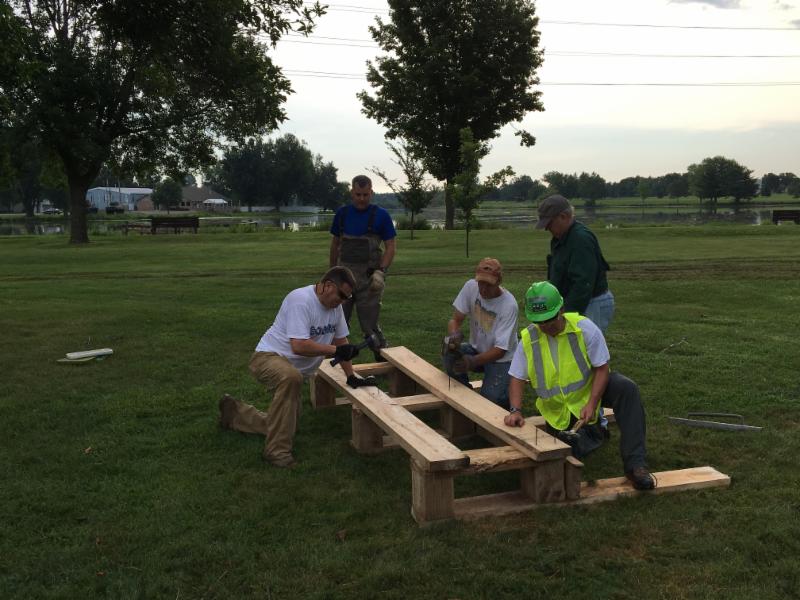
Cold Day on the Coldwater River
Another year and more bugs to count at the Coldwater River. On Saturday, May 19, 18 OBTU volunteers met at Tyler Creek campground outside Grand Rapids to begin our semi-annual 2018 macroinvertebrate survey with the Coldwater River Watershed Council (CRWC).
“Into each life a little rain must fall…” and that was definitely the case that weekend according to Marvin Strauch. Rain during the prior week had raised water levels on the Coldwater and surrounding rivers and colored the water. But then a new weather system moved in Friday and drenched the area overnight.
“We were a bit delayed in the morning, waiting for the rains to break,” said Strauch. “Of course, that gave us a bit more time to finish the campsite breakfast prepared by Stan Zarnowiecki. He has really hit his stride with eggs and sausages over a camp stove!”
The survey sites were on the Coldwater River at the M-43 crossing (in the midst of the area that had previously been destroyed by the haphazard tree cutting of a drainage commission contractor), Coldwater at Freeport, and on the tributaries streams – Duck Creek, Tyler Creek, and Cain Creek. These feeders are responsible for much of the cold water feeding the Coldwater. The Cain Creek site was an adjustment from last year and proved to be quite a healthy site. This survey site lies within a nature preserve – Maher Sanctuary – a lush habitat, plenty of forest canopy, with close growing native plants on the forest floor. Not surprisingly, that site yielded phenomenal numbers of mayflies (Baetis and March Browns), stoneflies, and cased caddis. As well, despite the rains, that site was flowing very clear. It was a glimpse into what all streams in this area could be if properly protected.
CRWC members prepared lunch for us after the count was completed. As well, each OBTU volunteer was given a framed print of the Coldwater River. It was an acknowledgement of our 14 years of cooperation in working to conserve and protect this southern Michigan trout stream.
Our members spent the rest of the weekend trout fishing on western Michigan, on the Coldwater River, Tyler Creek, the Rogue River, the Muskegon and the Pere Marquette. It was a successful conservation project and a fun weekend, though complicated by the elements.
You can view the results of our previous Macroinvertebrate surveys, as well as the environmental data on a host of Michigan streams at the MiCorps website – www.micorps.net – select the Data Exchange tab, then View Exchange. There are a few Coldwater Rivers in Michigan. Select the data for sites in Kent or Barry counties.
Special thanks go out to our volunteers: Miguel and Mirella Alvarez, Steve Carlson, Dave Carlson, Art Cottrell, Jim Hohenberger, Jim Jones, Ken Krueger, Dan LaFave, Frank Martin, John Martyn, Phillip Martyn, Alex Martyn, Ed Michael, Marvin Strauch, and Stan Zarnowiecki.
Chicago Life Magazine Feature Trout in the Classroom Story
The Chicago Life Summer issue features a three-page story on our “Trout in the Classroom” program written by the publication’s conservation writer Chris Johnson. The Chicago Life magazine will be included in all home deliveries to subscribers of the Wall Street Journal and New York Times Saturday papers in the Chicago metropolitan area this weekend. The combined circulation of both papers is 102,000. It is not available at newsstands.
See the Chicago Life Trout in Classroom article.
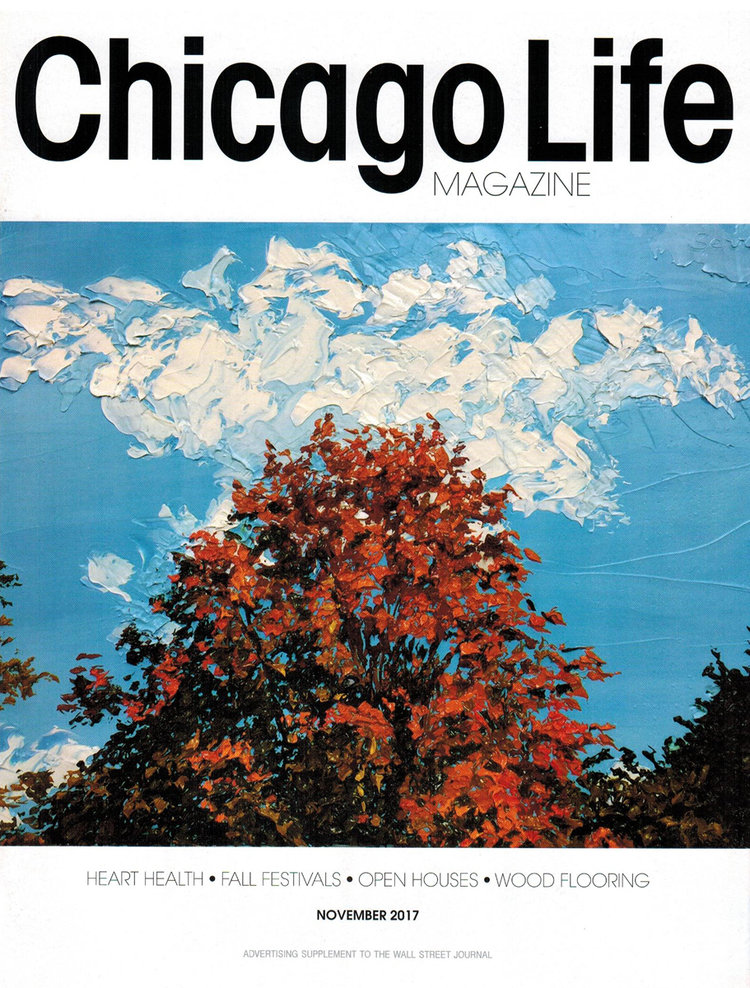
Chicago’s Shedd Aquarium Premiere’s New Reef Exhibit
The Shedd Aquarium, an OBTU business partner, has introduced a new special exhibit titled “Underwater Beauty” which opened May 25. The display features over 100 species from around the world arranged according to various themes such as “Shimmer” featuring a school of false herring; “Colors” showcasing a rainbow of colorful fish, underwater creatures and coral; “Patterns” depicting fish with spots and stripes that make them blend in or stand out as survival demands; and “Rhythms” which is all about ways of moving.
This is the first special exhibit to come under the Shedd’s new, simplified all-in-one price policy. According to the Shedd Aquarium, its mission is to ensure that all underwater beauty is conserved, protected and treasured because each animal plays a critical role in maintaining the balance and health of its aquatic environment.
For more information, visit the Shedd Aquarium website.
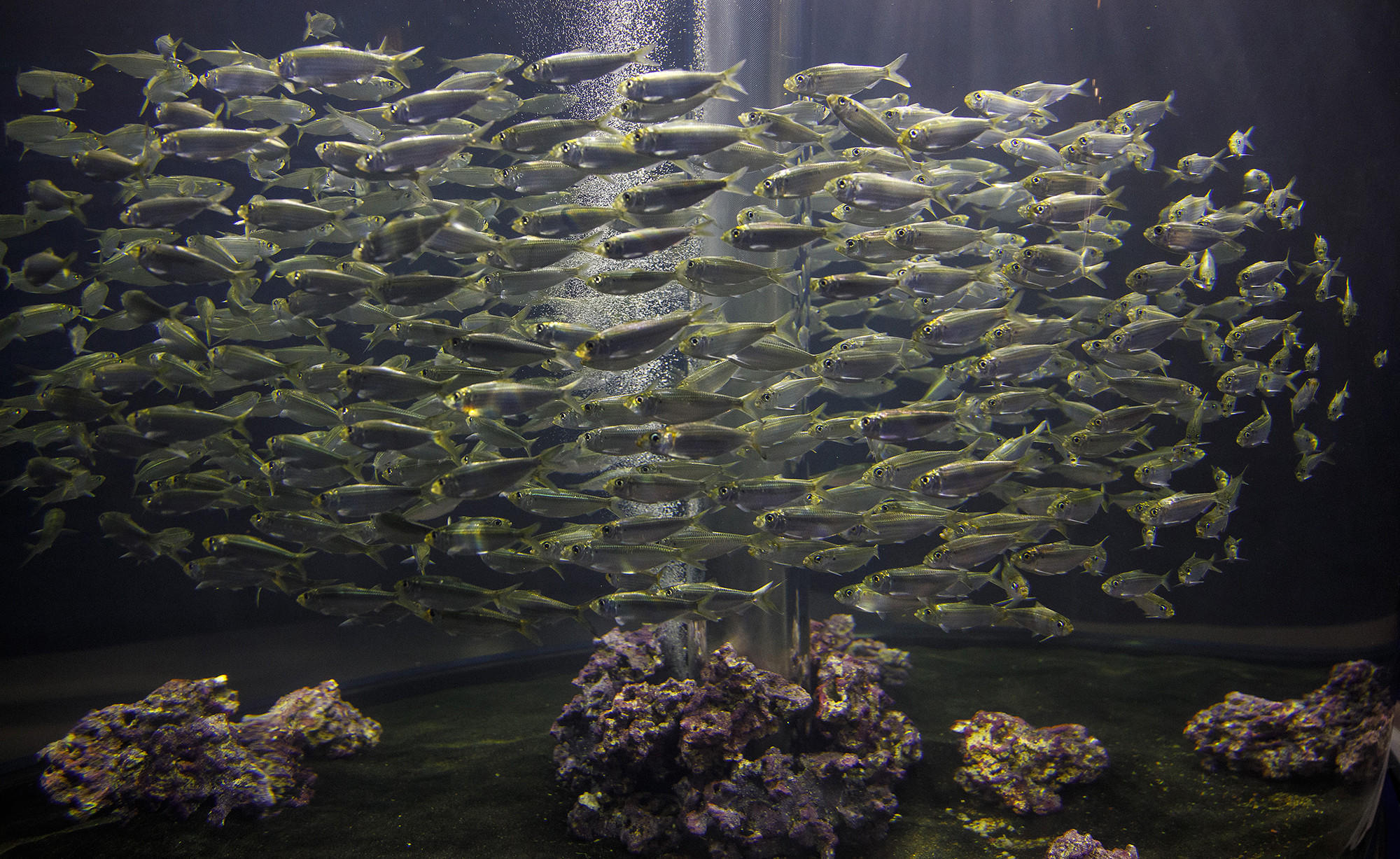
The Librarian’s Corner
By Phil Young
Raising the Ghost (Flyboys Production / 2008) 1hr 07m / DVD
Close your eyes and imagine that you are on the steelhead trip of a lifetime. A helicopter drops you, your friends, your camping gear and an inflatable raft on a remote stretch of the Skeena River deep in British Columbia. You break out the single-handed fly rods and the spey rods and find that huge steelhead are taking whatever you throw at them, even green drake dry flies on a dead drift.
This is Raising the Ghost. You won’t find any information regarding rod size, grain weights or fly selection here, but you will find an enjoyable and entertaining film. There is also a conservation message about how steelhead populations are 2% of their historic numbers due to over harvesting, poor timber practices, mining at the headwaters, dam building/hydropower and the introduction of different genetic strains of hatchery fish. We must all do what we can to preserve wild steelhead populations.
This DVD, as well as others in the chapter’s library, are available for check out at chapter meetings. If you are holding any of the chapter’s other videos, please return them when you are finished so that others may view them.

Book Review: “Kings of the Yukon”
Written by Adam Weymouth, “Kings of the Yukon” (272 pages; $27) documents the five species of salmon that swim the Yukon River each summer. The book traces the author’s summer journey paddling the 2,000-mile length of the Yukon River, from its headwaters in northwest Canada to its mouth off Alaska’s coast in the Bering Sea. Weymouth describes the Yukon River as “the most complex salmon fishery in the world.”

